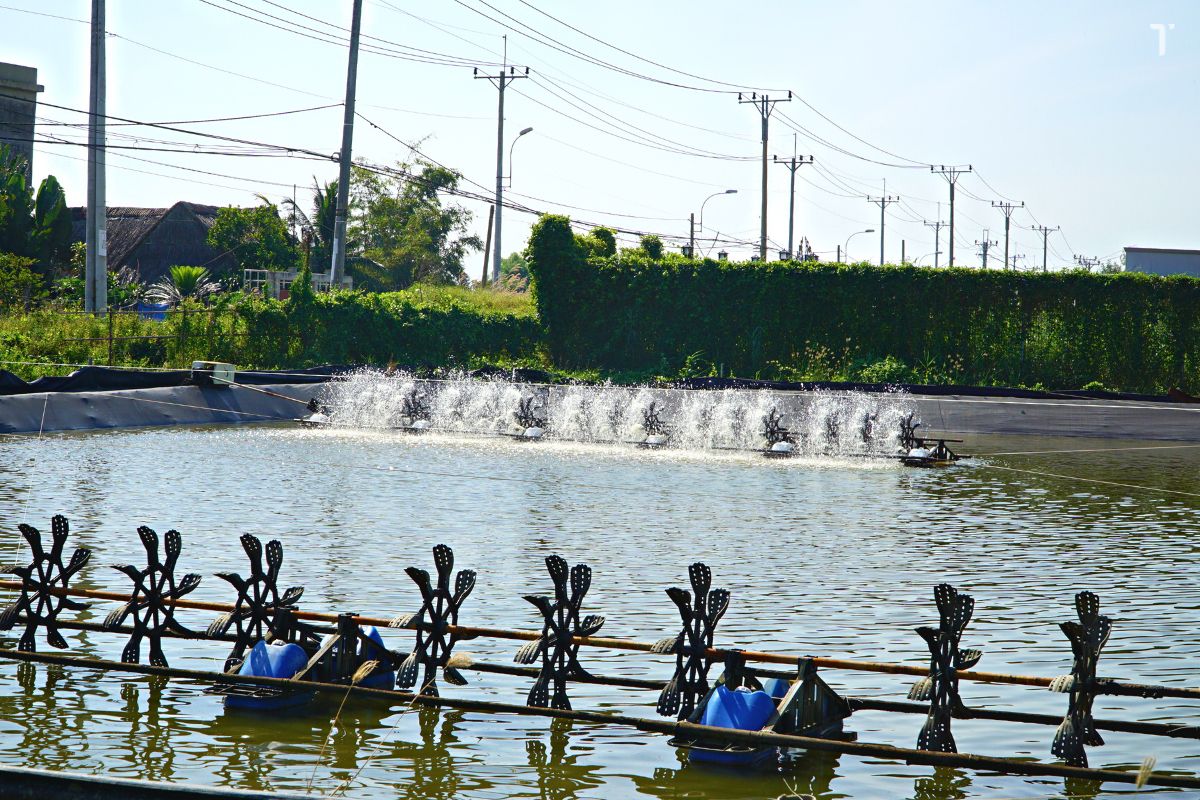NEWS & KNOWLEDGE
How to measure water indicators in aquatic farming?
To achieve high efficiency in aquatic farming, measuring and adjusting water indicators is very important. For example, is the water salinity appropriate? Alkalinity index, pH, NH3 concentration in water are closely related to the growth and development of fish and shrimp species.
We introduce to you a tool to measure important indicators in aquaculture in an accurate and simple way that anyone can do. This method requires some relatively inexpensive tools but is extremely effective.
Measure water salinity
The salinity of water can be accurately measured with the help of a hydrometer. So what is a hydrometer? How do they work and where can you buy them?
As we know, the more salty the water, the heavier it is. Salt water has a larger density and therefore its Archimedes repulsion is also larger, proportional to the amount of salt in it.

The simplest hydrometer for measuring salinity is constructed as a cylindrical block with a density equivalent to that of pure water. Salt-contaminated water has a heavier density, so when dropped into a cylindrical block, it will be pushed to the surface of the water. The lines marked on the raised part will tell us how saline the water is. Several improvements in hydrometer design will make it easier to use and read results more accurately.
Measure Ammonium content in aquatic water
Ammonium (including NH3 and NH4+ salts) does not bring anything good to fish and shrimp. Unfortunately, you always have to accept it because it is an inevitable part of aquatic farming. Ammonium is produced from leftover food, aquatic waste, decomposed animal and plant remains…
Ammonium test kit is based on a set of 2 vials of reagent solution. Their reactions to NH3 and NH4+ will produce corresponding color indicators so you know how much it is in the water and whether it is suitable for the growth of fish and shrimp.
The lower the Ammonium concentration in the lake, of course, the better. We can control it thanks to the activity of microflora in lakes and ponds. More advanced techniques can incorporate an aquaponics system for filtration. In case the concentration is too high to control, we can even consider a partial or complete water change.
Newly added water to replace, you need to measure indicators such as alkalinity, pH and especially pay attention to chlorine. For fish and shrimp, Chlorine is even more toxic than Ammonium.
Check the amount of chlorine in the water
Chlorine is essential for disinfection and clean water treatment. But they are relatively toxic to humans and very toxic to aquatic fish and shrimp. Domestic water and aquaculture water should not contain chlorine. To treat them, the most effective way is to expose them to the sun, as long as possible.
The Chlorine test kit will tell you how much Chlorine content is in each liter of water, and whether it is within the safe threshold for drinking water or raising aquatic animals. Of course, the lower the safer.
Measure alkalinity in water
Aquatic species such as shrimp need water with a certain alkalinity (CaCO3) to grow healthily and have a sturdy shell. Even each of their stages requires a different alkalinity. For example, newly released black tiger shrimp need 80~100 ppm, 45 days old need 100-130 ppm, over 90 days old need 130-160 ppm. Add lime or Dolomite mineral powder to achieve the necessary alkalinity for shrimp farming water.
Alkalinity test kit with test tube and bottle of test solution helps you accurately measure alkalinity in water. Instructions for measuring alkalinity are included with the test kit.
Check dissolved oxygen content
Adequate oxygen is one of the factors for good aquatic development, helping to increase productivity and higher economic efficiency. It is also essential to maintain the microflora in the lake to decompose toxins such as ammonia and nitrates that cause pollution and poisoning fish and shrimp.
Oxygen test kit with 2 test solutions and color chart indicating 8 oxygen levels from 0.0-8.0mg/L. From 0.4 is enough, above 0.6 is good. If dissolved oxygen is not achieved, you can add an air bubbler or fan to help diffuse oxygen into the lake.
Check the pH
Neutral pH in nature is approximately 7.0. Some aquatic species may prefer to live in high or low pH environments. There are many ways to measure pH:
Electronic pH meter: Most convenient to use to measure pH in lakes. Just plug it in and read the indicator displayed on the screen. However, genuine pH pens are relatively expensive and cheap ones are sometimes not really accurate.
You can use a pH test kit that includes a bottle of litmus solution and a color indicator board. This method is proven to be easy to do and highly reliable.
